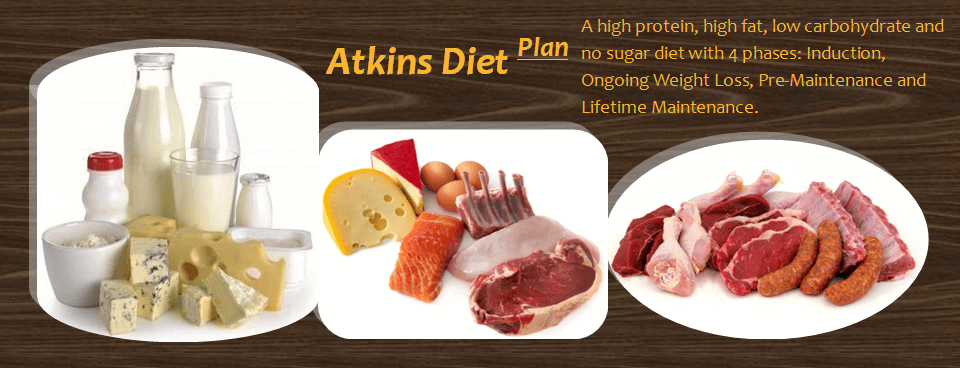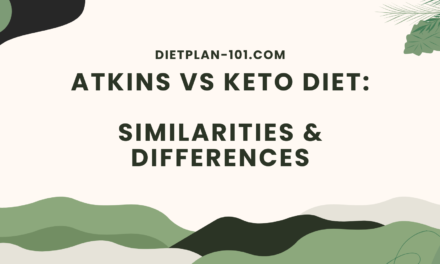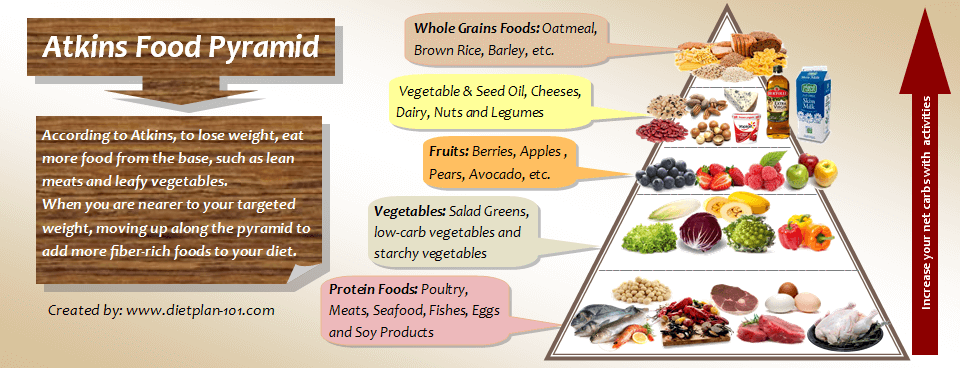
[ads]
What is the Atkins Diet?
Atkins Diet is officially called “The Atkins Nutritional Approach”. It was promoted by Dr. Robert C. Atkins through his book, Dr. Atkins’ Diet Revolution, in 1972. In 2002, a revised version of the Atkins diet was introduced through 2nd book, Dr. Atkins’ New Diet Revolution. Another book regarding this diet, The New Atkins for a New You, was released in 2010.
The basic principle of the Atkins Diet is limiting the consumption of carbohydrates (especially refined carbs) in one’s diet and replacing them with more proteins and fats so that the body is switched from carb-burning to a fat-burning machine. According to Dr. Atkins, naturally, the main source of energy for our bodies is carbohydrates (NOT fat). Our bodies will only switch to burning fat when it is short on carbohydrates. Overweight or obese people tend to take in too many carbohydrates and this will prevent their bodies from burning their body fats.
How does the Atkins Diet Work?
The science behind this diet is that one’s body is fueled by protein and fat, and in the absence of carbohydrates, the body will burn its stored fat to maintain the blood sugar level. In this way, the body will lose weight naturally without missing out on important essential fats, thus improving health issues due to being overweight, such as diabetes, heart disease, high blood pressure, etc.
[ads]
Atkins Diet and Diabetes
According to Dr. Atkins, this low-carbohydrate high-protein diet is great for those with irregular blood sugar levels, either hypoglycemia or diabetes. The body will take a longer time to break down both proteins and fats when compared to carbohydrates and sugars, and this will result in fewer hunger cravings and a steadier conversion of glucose. However, this diet is still not accepted as a therapy for any disease.
Phases and Principles of The Atkins Nutritional Approach
The four phases of the Atkins Nutritional Approach are: Induction, Ongoing Weight Loss (OWL), Pre-Maintenance, and Lifetime Maintenance.
The four principles of this approach are weight loss, weight maintenance, good health, and disease prevention.
- By cutting down the consumption of carbohydrates, the body will be switched to burn fats, thus leading to weight loss.
- Managing both CCLL* and ACE** will help in weight maintenance. (*Critical Carbohydrate Level for Losing (CCLL): a synchronized carbohydrate level that allows fat burning thus weight loss. **Atkins Carbohydrate Equilibrium (ACE): a level of carbohydrate intake on which the body weight does not fluctuate.)
- A controlled carbohydrate yet nutritionally balanced diet offered by the Atkins diet, together with easy-to-follow exercises, promotes good health as well as reduces the risk of having chronic diseases.
Atkins Diet Phase 1: Induction (Inducing Weight Loss)
As per its name, this is the phase where you’ll induce or kick start your weight loss journey by turning your body from carb-burning into a fat-burning machine. Atkins claims that you’ll be able to lose up to 15 lbs (about 7 kg) within the first 14 days, though results will differ depending on the individual.
In this phase, you’re only allowed to have proteins (e.g. fish, seafood, meat, poultry, eggs, cheeses), healthy fats (butter, mayonnaise, olive oil, and vegetable oils), and vegetables, with a total of 20 g net carbs daily. Since cheeses do have carbs in them, limit the intake to 4 oz (about 4 slices) a day. About 12 g to 15 g of daily net carbs should be from vegetables.
You need to drink at least 8 glasses (8 oz) of plain water, but limit caffeinated tea or coffee to 2 cups a day. To avoid constipation, include more fiber in your drinks or meals (e.g. psyllium husks, ground flax seed, and wheat bran). Watch out for hidden carbs in sauces, gravies, and dressings, as well as the sugar content in chewing gums and cough syrups.
[ads]
Atkins Diet Phase 2: Ongoing Weight Loss (OWL) (Losing Weight Steadily)
Going into Phase 2, you will have more types of food and carbohydrates added back to your diet. Besides food from Phase 1, now you can have some berries (e.g. blueberries, raspberries, strawberries), nuts and seeds, yogurt, heavy cream, etc.
During OWL, you are allowed to add additional 5 g net carbs a day for each week. For example, for the 1st week, you will have 25 g of net carbs a day. Going into the 2nd week, you can have 30 g net carbs a day, and so on. You will be adding extra carbs each week until you find your Critical Carbohydrate Level of Losing weight (CCLL), which is the optimum level of carbohydrates for losing extra weight. The range of CCLL will be around 25 g to 45 g net carbs depending on the individual and can be more if you have an active lifestyle.
Atkins Diet Phase 3: Pre-Maintenance (Learn How to Maintain Weight)
After losing a lot of weight in the previous 2 phases, you are now 10 pounds from your targeted weight. You will move slower to find your own carb balance, or Atkins Carbohydrate Equilibrium (ACE). You will be adding more low-carb foods to your daily diets, such as starchy vegetables, legumes, fruits, whole grains, and whole-grain products.
During this Pre-Maintenance phase, you will be adding an additional 10 g of net carbs a day for each week. Once you have reached your goal, you will switch to maintaining your weight. The number of net carbs (in grams) you have daily without changing your weight will be your ACE. The ACE for each individual will be different, it may be much higher or just a few grams higher than the CCLL, or maybe the same as the CCLL.
Once you have got your personal carb balance, you will need to keep your weight steady for at least a month by staying below your ACE. This is the time for you to fine-tune your eating habits before moving into the last phase, which is Lifetime Maintenance.
[ads]
Atkins Diet Phase 4: Lifetime Maintenance (Achieve Targeted Weight Goal)
Your goal weight is now stable and now you are proceeding to the last phase, Lifetime Maintenance. Besides having foods from the earlier phases, you can slowly reintroduce more foods in the coming months and years. If a certain food has caused weight gain, hunger, cravings, or any other carb intolerance symptoms, then remove it from your food list.
You are now very clear about what types of foods and the quantity you can eat in order to maintain your current weight. You may need to make some alterations to your ACE as time goes by as you get older or you may have made some changes to your lifestyle. If you properly follow it without cheating, your weight will not fluctuate more and you will never regain your weight.


